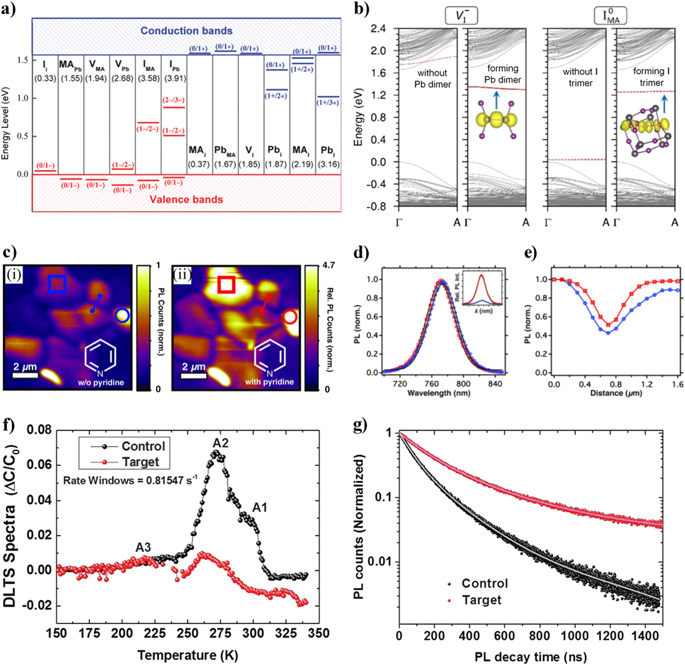npj Flexible Electronics ( IF 12.3 ) Pub Date : 2018-08-14 , DOI: 10.1038/s41528-018-0035-z Feng Wang , Sai Bai , Wolfgang Tress , Anders Hagfeldt , Feng Gao

|
Metal halide perovskites have achieved great success in photovoltaic applications during the last few years. The solar to electrical power conversion efficiency (PCE) of perovskite solar cells has been rapidly improved from 3.9% to certified 22.7% due to the extensive efforts on film deposition methods, composition and device engineering. Further investigation on eliminating the defect states in perovskite absorbers is necessary to push forward the PCE of perovskite solar cells approaching the Shockley-Queisser limit. In this review, we summarize the defect properties in perovskite films and present methodologies to control the defects density, including the growth of large size crystals, photo-curing method, grain boundary and surface passivation, and modification of the substrates. We also discuss the defects-related stability and hysteresis issues and highlight the current challenges and opportunities in defects control of perovskite films.
中文翻译:

高性能钙钛矿太阳能电池的缺陷工程
过去几年中,金属卤化物钙钛矿在光伏应用中取得了巨大成功。钙钛矿型太阳能电池的太阳能到电能转换效率(PCE)已从3.9%迅速提高到经认证的22.7%,这是由于在薄膜沉积方法,成分和器件工程方面的广泛努力。为了使钙钛矿太阳能电池的PCE逼近Shockley-Queisser极限,有必要进一步研究消除钙钛矿吸收器中的缺陷状态。在这篇综述中,我们总结了钙钛矿薄膜的缺陷性质,并介绍了控制缺陷密度的方法,包括大尺寸晶体的生长,光固化方法,晶界和表面钝化以及基底的改性。











































 京公网安备 11010802027423号
京公网安备 11010802027423号